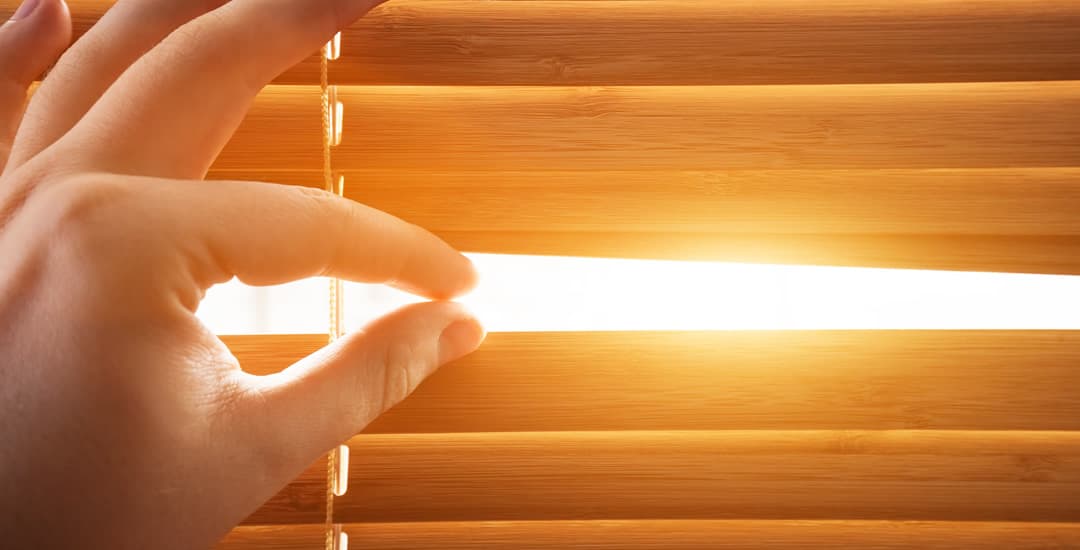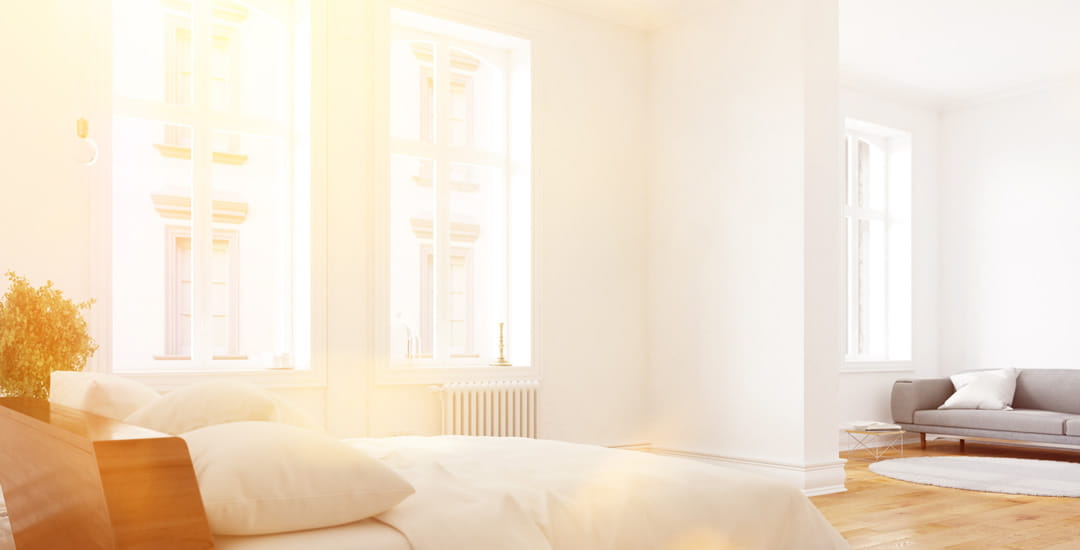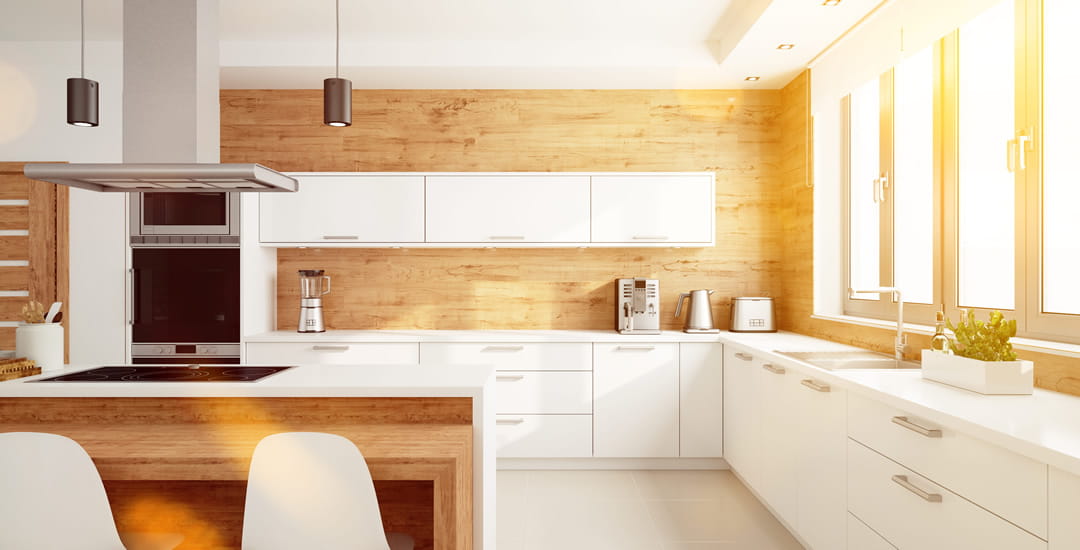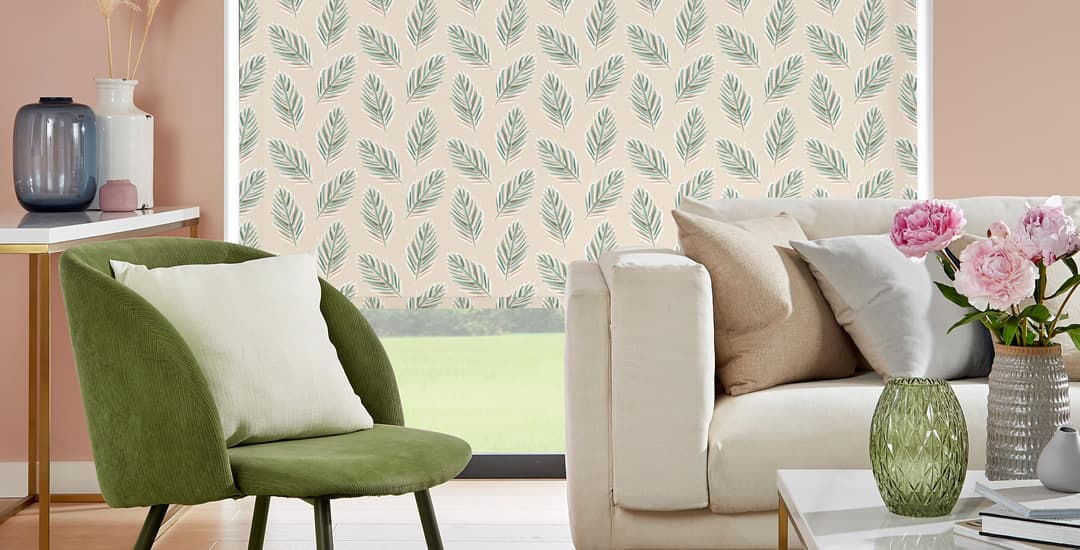
Anyone who ever lived in a basement flat or spent more than a night or so in a windowless hotel room will be all too aware that too little sunlight or no sun at all can make a space feel quite depressing and confined, however large it might be.
But what are the pros and cons of sunlight in the home, and are there any ways to boost the pros and mitigate potential cons? This blog post will tell you everything you need to know, along with some tips on maximising sunlight when this is desirable, and stopping it in its tracks when it is not!
What are the pros and cons of sunlight in the home: The good bits
Few of us would deliberately choose to keep sunlight out of the home altogether, but a lot of folks would struggle to actually articulate what the advantages of natural light in the home actually are, other than a vague sense of wrongness in its absence.
The good things that come with your home getting plenty of sun are fairly diverse, and the first of these is that we need natural sunlight to help to maintain our natural circadian rhythms, and to enable our bodies to turn the cholesterol in our diets into vitamin D; something many people become deficient in during the winter.
Natural sunlight helps us to orient ourselves and maintain our sense of the passage of time, and to wake up naturally and in a positive fashion.
Getting enough sun can actively help people who suffer from seasonal affective disorder or that just find winter a bit of a struggle to cope better during the darker months of the year, and it does much more besides.
House plants need sunlight to grow and remain healthy, and a whole range of activities from working online to painting to even putting your makeup on are better performed in natural light than artificial light, for various reasons.
I’m sure this is just the tip of the iceberg, and if I have missed something really obvious in terms of the pros of sunlight in the home, feel free to tell me in the comments and I will update accordingly.
What are the pros and cons of sunlight in the home: The bad bits

On the flipside, while living in a home with no natural sunlight at all is something most of us would be keen to avoid, there are some potential downsides to sunlight in the home too; particularly if it is overly bright or glaring. The cons of too much sunlight entering the home tend to be far more of an issue in summer than winter, for obvious reasons!
- The most notable and potentially problematic issue caused by too much sunlight entering the home is that prolonged exposure to glaring sun can make the room or home uncomfortably hot. This has more implications than it might at first seem to, as well as just making your home feel unpleasant or even intolerable to be in.
- If you’ve got pets, an uncomfortably hot home will also affect them, and can actually cause dangerous overheating and even heatstroke if you’re unable to mitigate the effects of this.
- Even when it comes to fishkeeping, high levels of sunlight directly on the tank can cause overheating in both cold water and tropical/marine set-ups, and often results in an absolute explosion of green algae growth in a very short period of time too!
- Your fridge and freezer will have to work harder to keep their cool, and may struggle in very hot weather; potentially risking their contents, increasing your energy bills, and even worsening the home’s general overheating, as your fridge and freezer discharge hot air via their vents as part of the cooling cycle.
- For people, too much sunlight can have a number of implications throughout the day, starting quite literally at dawn. If you don’t have blackout blinds or curtains, the sun coming in through a window is apt to wake most people up, which isn’t necessarily what you want to be happening at 6am on your day off.
- You’ve also got screen glare to factor in too; be that your PC screen, TV, gaming monitor, Kindle, tablet, or even phone. This can render your devices more or less unusable until you’re able to take the edge off the level of light entering the room, and can also cause you to squint to try to mitigate the issue, sometimes without consciously realising you’re doing it, which in turn can cause eyestrain and headaches.
- Finally, medium to long term exposure to bright sunlight also causes fading and discolouration of all manner of things in a room too. This is most likely to affect soft furnishings before anything else (curtains, sofas, cushions, and carpets) but will also fade paint and wallpaper, photos and art, and more or less anything else you can think of.
As the impact of this is cumulative, you may not even realise it’s happening until you take a picture off the wall and realise that the paint or wallpaper behind it is a different colour; or in my case, if you spill wine on the sofa and try turning the cushion over to hide the evidence, and find the back to be an entirely different shade than the front was!
Are the pros and cons of sunlight in the home universal?

I’m aware that my “bad bits” list of the pros and cons of sunlight in the home is actually a ways longer than the “good bits” list, which is somewhat misleading.
While the actual number of items on the list of potential cons of sunlight in the home is higher than the pros, not everyone will suffer from all (or even necessarily, any) of them, and they can all be mitigated to some extent, if not completely too.
Whereas if you don’t get enough sun in the home, this can be harder to correct; turning the house around to make it face south and/or cutting a few more windows into it is probably not on the cards for most.
As I said earlier, some folk may have very specific or unique issues in play due to too much or not enough sun. Maybe if you bake and the chocolate on your cakes won’t set because it’s too hot?
You get the picture, but I’m reaching now because other than that, I don’t know what. Are the pros and cons of sunlight in the home universal to everyone then? No, not all of them will apply in the same way to everyone, even those that get similar levels of sun.
For instance, when it comes to sun blazing into a room at dawn on a summer’s day, this would totally ruin some people’s lives (and sleep) but be considered the best way to wake up naturally by others.
Some sunlit rooms might cause such a high degree of screen glare on digital devices as to render the room unusable for their usage without blocking the sun out entirely, but serve as a fantastically well-lit space for an artist or seamstress.
However, if you’re looking at a home to buy or rent and get the impression that one or more of its rooms either get a disproportionate amount of sun or alternatively, not enough, it is a good idea to be aware of the potential or theoretical implications of this before, rather than after, you commit to taking them on.
Is there anything you can do to counteract not enough sunlight in the home?
In practical terms, if you have a room that doesn’t get enough sunlight for your liking you may be limited in what you can do, although there will probably be a few things that could make a difference.
- Maximising the amount of light you do get is one of these; such as by choosing blinds rather than curtains, hung in such a way to ensure that they leave the whole of the window glass clear and un-occluded when open.
- If something external can be done too – perhaps cutting back ivy growth around the window or trimming or cutting down a tree casting shadows – then all the better.
- Adding in the right type of natural spectrum artificial lighting can really give the illusion of more sunlight in a room too, and this is well worth investing in for spaces that really struggle to get enough light.
Is there anything you can do to reduce the impact of too much sunlight in a room?

If a room gets too much sun, this can be mitigated in a range of ways depending on the issues that this excess of light is causing.
- Blackout blinds for the bedroom can help you to stay asleep past dawn (noisy birds notwithstanding; the avian kind or the “returning from a drunken night on the town in the wee hours” kind alike).
- Thermally insulating blinds that are kept closed during the day can help to stop a room from overheating as badly as it otherwise would on hot and bright days, and make a noticeable difference of at least a few degrees. This in turn can keep a room tolerable for use by you, as well as safe for your pets, and give your fridge and freezer a fighting chance of coping too.
- For pets (dogs, really) cooling vests and jackets can help them to stay cool in hotter rooms, and you should also bear in mind that pale-coated and pink-skinned dogs (and cats for that matter) can actually get sunburn even indoors, and they might need sunscreen applied if they spend a lot of time lazing about in bright rooms.
- Keeping windows open behind closed blinds, using fans (particularly with a bowl of water in front of them) and keeping yourself and your pets properly hydrated are all helpful too.
- When it comes to the impact of screen glare, there are a number of different types of window blinds that can be used to filter light; enabling you to retain some natural light while still being able to see what you’re doing. These include day and night blinds, Venetian blinds, real wood blinds and faux-wood blinds, and vertical blinds.
- All of the above-mentioned types of blinds are also available in blackout options too (covering your bases for rooms you also sleep in) and for all but the day and night blinds, are either natural insulators or can be made with a thermally insulating lining, to help to further lower the temperature of the room when the blinds are fully closed too.
- In terms of preventing or reducing fading caused by sunlight, again, blinds can help to achieve this and protect the contents of your room. Blinds in dark, rich, or bold colours may themselves fade over time in bright sun; but the coloured side of the blind faces into the room rather than into the sun, and so the impact of this is limited if the blinds remain closed on very bright days.
What are the pros and cons of sunlight in the home that you live in?
If you’re facing an issue I haven’t even thought of or have found an alternative workaround for one of the issues covered, please feel free to tell me in the comments, and I’ll add it to the post.




